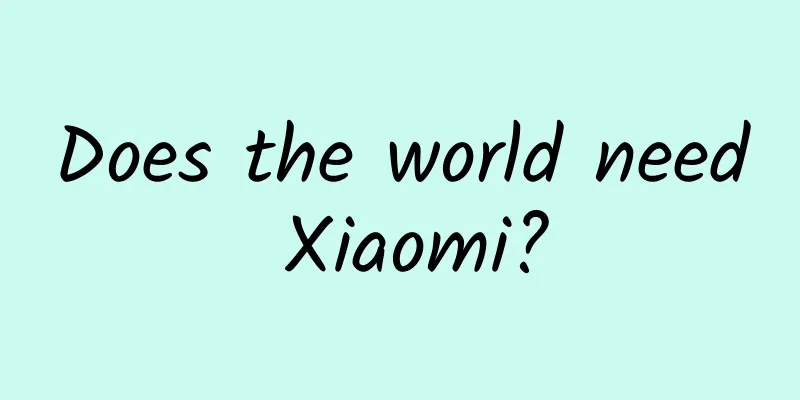Apple and Google have both killed it, so why is the 3.5mm headphone jack so unpopular?

|
In recent days, Google Pixel 2 has become a hot topic in the Android phone camp. With its powerful performance and high price, it has become a well-deserved benchmark product in the Android phone camp. Compared with the previous generation of Pixel, Google has made some major adjustments to the second generation, the most obvious of which is the removal of the 3.5mm headphone jack. This is not the first product in the Android camp to cancel this interface. As early as last year, after Apple took the lead in canceling the 3.5mm headphone jack in the iPhone 7, Xiaomi followed suit on the Xiaomi 6 and canceled the 3.5mm headphone jack. However, as the controller of the Android system, Google's approach is obviously more influential, and its approach has clearly shown that Android will abandon the traditional headphone jack. Therefore, under the promotion of Google, the entire Android camp is expected to abandon the headphone jack that has been used for many years in the future. So the question is, first Apple, then Google, why are the two leading companies in the mobile phone industry so unpopular with this standard headphone jack that has been used for many years? First, to improve the sound quality. All mobile phone manufacturers who have cancelled the 3.5mm headphone jack have put forward this view. At first glance, this view does make some sense. The USB-C interface can directly output digital signals without any processing and transmit them directly. It will more or less retain some of the original flavor of the audio files and can improve some sound quality effects. However, audio enthusiasts know that the quality of sound is not just determined by signal transmission. Lossless audio files, decoding output chips, etc. all play a decisive role in improving the sound quality. In addition, the most direct way to change the sound quality is to connect a pair of headphones with excellent sound quality. Such high-end headphones are cheap at one or two thousand yuan, and the expensive ones are tens of thousands of yuan, and they all use the mainstream 3.5mm and 6.5mm interfaces. Therefore, removing the 3.5mm interface from mobile phones can indeed improve the sound quality, but few people will copy hundreds of Mb of lossless audio files for a song to their mobile phones, and there are no decoding chips in the mobile phones that can process these files. At the same time, when there is no headphone jack, our general practice is to choose Bluetooth headphones, which is a simple and convenient method. However, the wireless audio transmission established through Bluetooth does not play a big role in improving the sound quality. Therefore, the improvement in sound quality brought about by this change is not obvious. Instead, it makes us clearly realize that our previous headphones can no longer be used on these mobile phones. Secondly, to save space inside the phone. In my opinion, this is the fundamental reason why mobile phone manufacturers decided to cancel the 3.5mm headphone jack. Bigger screen, larger screen-to-body ratio, longer battery life, thinner body, etc. have become the pursuit of all mobile phone manufacturers. Xiaomi once gave such an explanation for Xiaomi Mi 6: as a highly integrated electronic product, the internal space of a mobile phone is absolutely "every inch of space is valuable", and the removal of the headphone jack can leave more room for other components, such as a larger battery. In addition, the traditional 3.5mm headphone jack is thicker than the Lightning jack and USB-C jack. Therefore, after canceling the 3.5mm jack, the related structures on the circuit board will be reduced, and the corresponding volume occupied will also be reduced, which effectively reduces the thickness of the phone body. Compared to improving sound quality, this reason is obviously more reliable. Removing an unnecessary component can actually improve overall performance and design. For mobile phone manufacturers, why not do it? Again, increase the airtightness of the mobile phone and improve the IP level of the mobile phone. Reducing the exposed holes on the phone does play a role in improving the IP rating, but in fact such a role is not decisive. For example, Samsung and Sony, which have always used waterproof and dustproof as their selling points, did not cancel the 3.5mm headphone jack on their mobile phones. Instead, they sprayed a layer of nano-coating on the interface. This simple solution can easily improve the product's protection level. Therefore, not all manufacturers regard the removal of the 3.5mm headphone jack as a necessary way to improve the three-proof level of mobile phones. The last and most scheming reason is to allow mobile phone manufacturers to sell accessories better. The biggest inconvenience of removing the traditional headphone jack is that the original headphones can no longer be used. Even if you continue to use the original headphones through an adapter, there is no way to charge them while using them. Therefore, the best solution is to use Bluetooth headphones. In this way, mobile phone manufacturers can launch matching Bluetooth headset accessories in a timely manner to boost their revenue. The best example is Apple. When Apple launched the iPhone 7 without the 3.5mm headphone jack, it also launched its own Bluetooth headset accessory AirPods. Although it was expensive, it also had quite good sales. Coupled with the acquisition of Beats, this wave of rhythm has indeed made Apple earn a lot of money on accessories. Therefore, for Android manufacturers such as Google and Xiaomi, relying on user stickiness to force a wave of accessories is a very worthwhile approach to try. In fact, it is because of the special nature of mobile phones that the 3.5mm headphone jack has gradually become an optional configuration. After weighing the pros and cons, removing it can bring more benefits, which naturally makes it unpopular. As a winner of Toutiao's Qingyun Plan and Baijiahao's Bai+ Plan, the 2019 Baidu Digital Author of the Year, the Baijiahao's Most Popular Author in the Technology Field, the 2019 Sogou Technology and Culture Author, and the 2021 Baijiahao Quarterly Influential Creator, he has won many awards, including the 2013 Sohu Best Industry Media Person, the 2015 China New Media Entrepreneurship Competition Beijing Third Place, the 2015 Guangmang Experience Award, the 2015 China New Media Entrepreneurship Competition Finals Third Place, and the 2018 Baidu Dynamic Annual Powerful Celebrity. |
<<: Blade batteries are finally commercially available, BYD's "Han" will take on Tesla
>>: Tesla's ad claims to include self-driving features, German court says: Don't brag if you can't
Recommend
Fenghuo Cross-border Product Director Training Camp, industry leaders jointly develop and solve industry bottlenecks
Fenghuo Cross-border Product Director Training Ca...
Guide to using self-media operation materials!
In the process of self-media creation, it is inev...
Domestic car sales ranking in July: Volkswagen plummeted, while BYD New Energy soared 82.94%
Recently, the China Association of Automobile Man...
In-depth review: Where is fast charging for new energy vehicles heading from the perspective of batteries?
1. Fast charging trends of batteries with differe...
New discovery of the Webb telescope: directly "seeing" galaxy formation
In the May 24, 2024 issue of Science magazine, an...
Can calcium supplementation be used to treat calcium deficiency? The calcium tablets you swallow may not have entered your bones!
Author: Qu Tiebing, Chief Physician, Beijing Boai...
Shenma search promotion keyword setting, how to add keywords in Shenma?
1. Definition of Keywords Keywords are words or s...
Say goodbye to information asymmetry and restore the true truth about mobile phone repairs!
Some time ago, Ms. Wang from Wuhan repaired her m...
Fun fact: There are many stars in the universe, more than the grains of sand on Earth?
The universe is vast and boundless, and the numbe...
Can eating boiled vegetables help you lose weight? 7 weight loss rumors that you believe are harming your health
Author: Ruan Guangfeng, Deputy Director of Kexin ...
How to write a short video title? How to write a title to increase playback volume?
If the number of short video views is not increas...
How to write good information flow copywriting ideas? 5 creative ideas to help you get inspiration quickly!
Due to the particularity of information flow adve...
Android 14 system causes trouble, Google Pixel 6 phone storage space cannot be accessed after upgrade
On October 18, every time Android releases a new ...
"Sun God Clothes" are here! Chinese universities develop 24-hour constant temperature smart clothing, it's so cool
This winter is too cold. On December 16, the Cent...
Is iPhone the most secure and reliable smartphone?
Is the iPhone the safest and most reliable phone? ...









